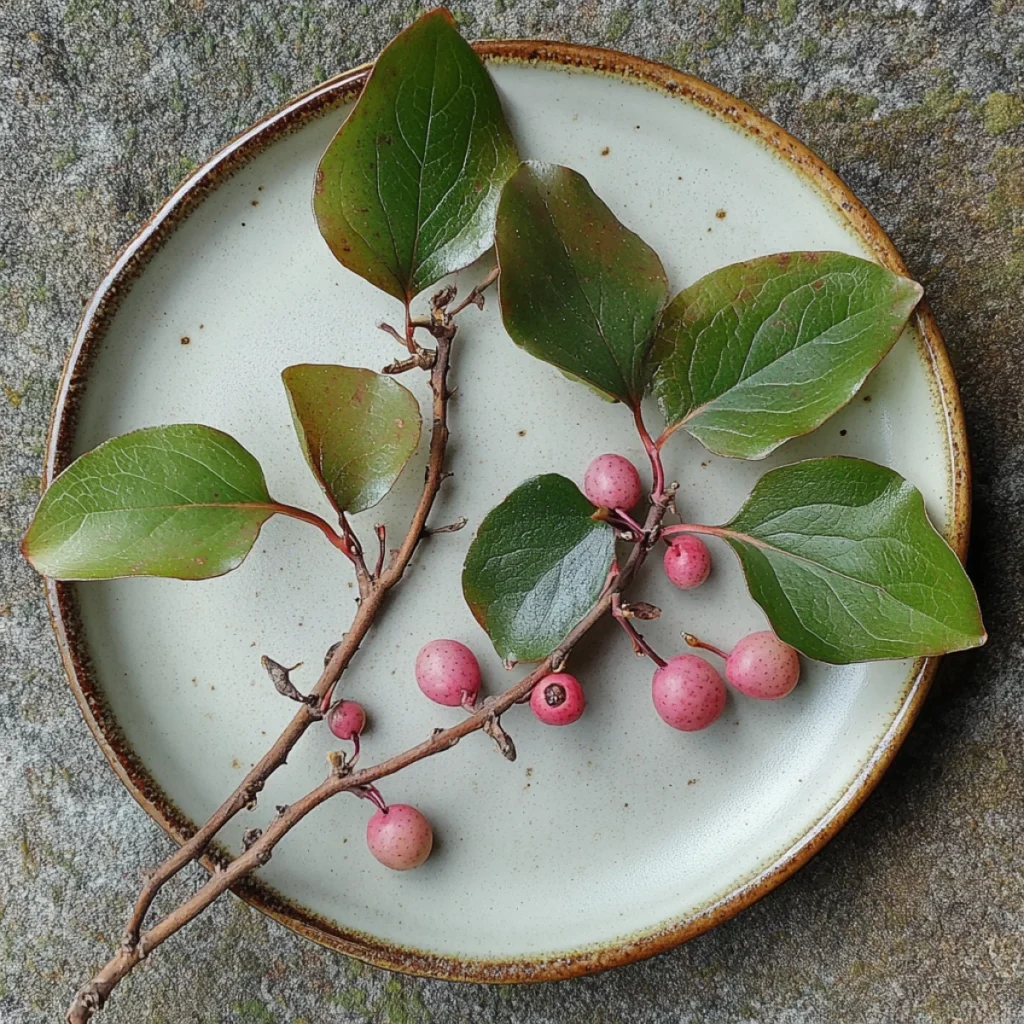
Gaultheria procumbens, commonly called wintergreen or teaberry, grows in cooler regions, including parts of Alaska. This plant produces red berries and mint-scented leaves, which people have used for culinary and medicinal purposes for centuries. But the question remains: Can you eat Gaultheria procumbens in Alaska safely? Let’s explore its edibility, traditional uses, and how you can consume this plant safely.
For creative ideas on how to use wild ingredients in your cooking, visit Creative Sourdough Discard Uses, where you’ll find unique ways to incorporate foraged foods and sustainable ingredients.
If you’re interested in learning more about activating wild ingredients, explore How Do I Activate Sourdough Discard? for tips on making the most of nature’s offerings.
What is Gaultheria Procumbens?
Gaultheria procumbens grows low to the ground, producing bright red berries and thick, shiny leaves with a minty aroma. It thrives in forested areas and has been foraged for both food and medicinal purposes. In Alaska’s cooler climates, this plant can be an exciting find for those who know how to use it safely.
Identifying Gaultheria Procumbens in Alaska
Correctly identifying Gaultheria procumbens is crucial when foraging. Here are some key features to look for:
- Berries: Small, bright red, and round, resembling cranberries.
- Leaves: Thick, oval, and shiny with a strong minty scent when crushed.
- Growth habit: Grows low to the ground, often forming mats or clusters in forested areas.
In Alaska, you can find this plant in cool, moist forest floors. Before consuming it, make sure to properly identify it to avoid mistaking it for another, potentially toxic, plant.
Nutritional Value of Gaultheria Procumbens
Gaultheria procumbens offers some nutritional benefits, though it isn’t as nutrient-dense as other wild berries. Here’s what you get:
- Vitamin C: Supports the immune system.
- Antioxidants: Help protect your body from oxidative stress.
- Methyl Salicylate: Contains anti-inflammatory properties and adds a minty flavor.
Though the berries and leaves provide some health benefits, it’s essential to consume them in moderation due to the presence of methyl salicylate, which can be toxic in large quantities.
Can You Eat Gaultheria Procumbens in Alaska?
Yes, you can safely eat Gaultheria procumbens in Alaska, but you should consume it in moderation. Both the berries and leaves are edible. Indigenous peoples have historically used the plant for both food and medicine, making it a valuable resource in the wild.
Edible Parts:
- Berries: You can eat them raw, brew them into teas, or use them in jams and jellies. The berries have a mild, minty flavor.
- Leaves: Often brewed into wintergreen tea, the leaves offer a refreshing taste and potential medicinal benefits.
To learn more about sustainable ways of using foraged foods, check out Creative Sourdough Discard Uses for more ideas on natural ingredients.
How to Eat Gaultheria Procumbens
Here are some of the best ways to enjoy Gaultheria procumbens:
Raw Consumption:
- You can eat the berries straight from the plant. Their mild, minty flavor works well as a snack or a garnish for salads.
Wintergreen Tea:
- Brew the leaves into tea by steeping them in hot water. This tea has traditionally been used for its pain-relieving properties and its refreshing flavor.
Recipes:
- Jams and Jellies: Use the berries to make a flavorful jam or jelly.
- Syrups: Simmer the berries with sugar and water to create a minty syrup.
- Baked Goods: Add the berries to muffins or bread for a unique flavor twist.
For more inspiration on incorporating wild foods into your cooking, visit How Do I Activate Sourdough Discard?.
Medicinal and Herbal Uses of Gaultheria Procumbens
People have used Gaultheria procumbens medicinally for centuries due to its methyl salicylate content, which works similarly to aspirin. Here’s how it can help:
Common Medicinal Uses:
- Headache relief: People drink wintergreen tea to relieve headaches.
- Sore Throat: Gargling with wintergreen tea can help soothe a sore throat.
- Muscle pain relief: Topical application of the plant’s essential oil helps ease muscle pain.
Though it has several medicinal uses, remember to use it in moderation, as excessive consumption can lead to toxicity.
Safety Considerations and Potential Toxicity
Although Gaultheria procumbens is safe to eat in small quantities, be mindful of the following safety tips:
Key Safety Tips:
- Moderation: Limit your intake of the berries and leaves to avoid consuming too much methyl salicylate.
- Foraging responsibly: Ensure you correctly identify the plant before eating it.
- Children and pets: Monitor their intake, as they may be more sensitive to the plant’s compounds.
By following these safety guidelines, you can enjoy Gaultheria procumbens safely while taking advantage of its culinary and medicinal benefits.
FAQs About Gaultheria Procumbens
Can you eat the leaves of Gaultheria procumbens?
Yes, you can brew the leaves into tea. However, be sure to consume it in moderation due to its potent compounds.
Are wintergreen berries safe for children?
Yes, but ensure they consume them in small amounts, as eating too many can cause digestive upset.
How do I preserve wintergreen berries?
You can freeze the berries or make them into jams or syrups for long-term storage.
Conclusion
Gaultheria procumbens, or wintergreen, is a versatile plant found in Alaska. You can safely eat its berries and leaves in moderation, and they offer both culinary and medicinal benefits. Whether you’re making jams, brewing tea, or simply enjoying the berries raw, this plant is a valuable resource for foragers.
For more ideas on using wild and natural ingredients, visit Creative Sourdough Discard Uses and learn more about activating ingredients in How Do I Activate Sourdough Discard?.
